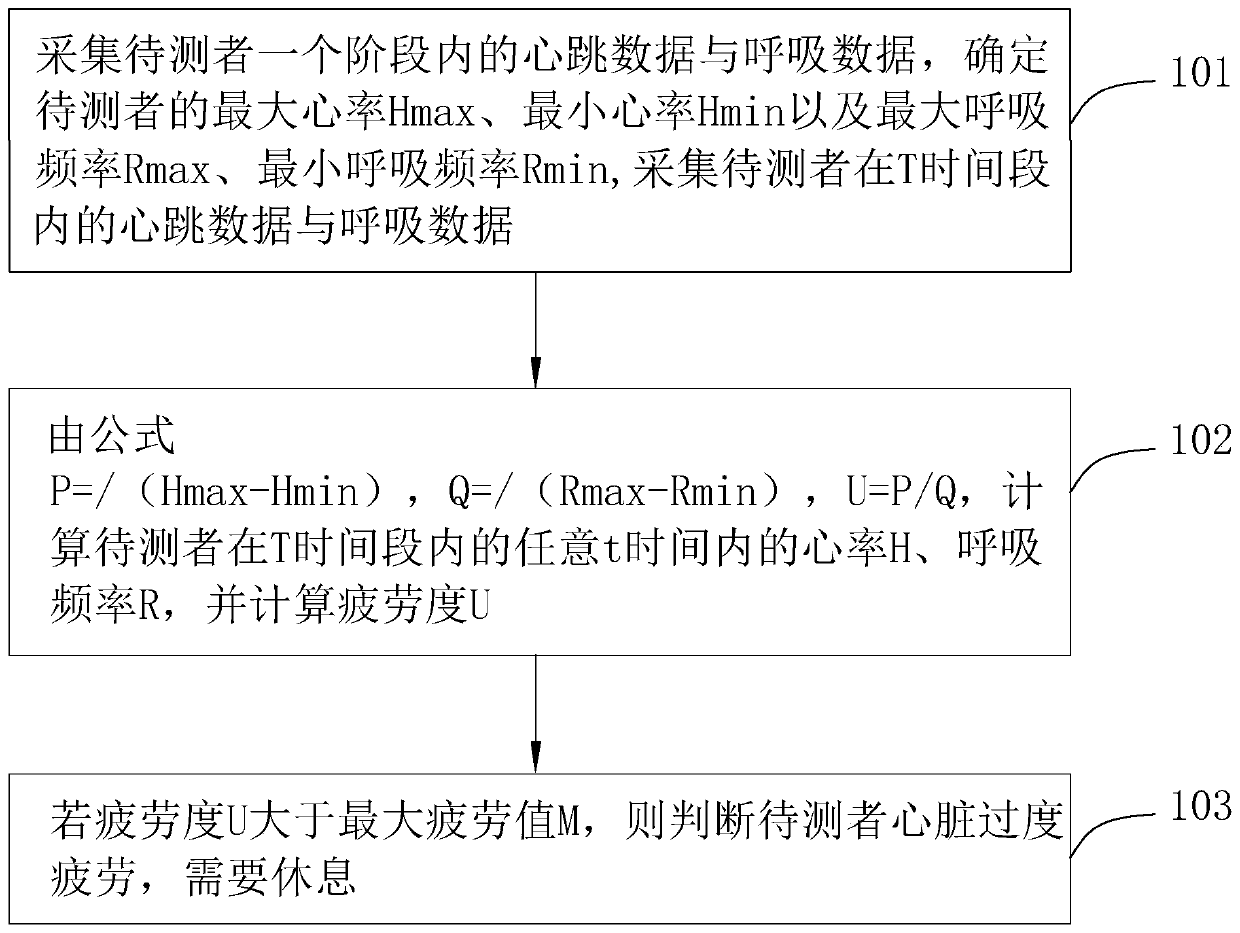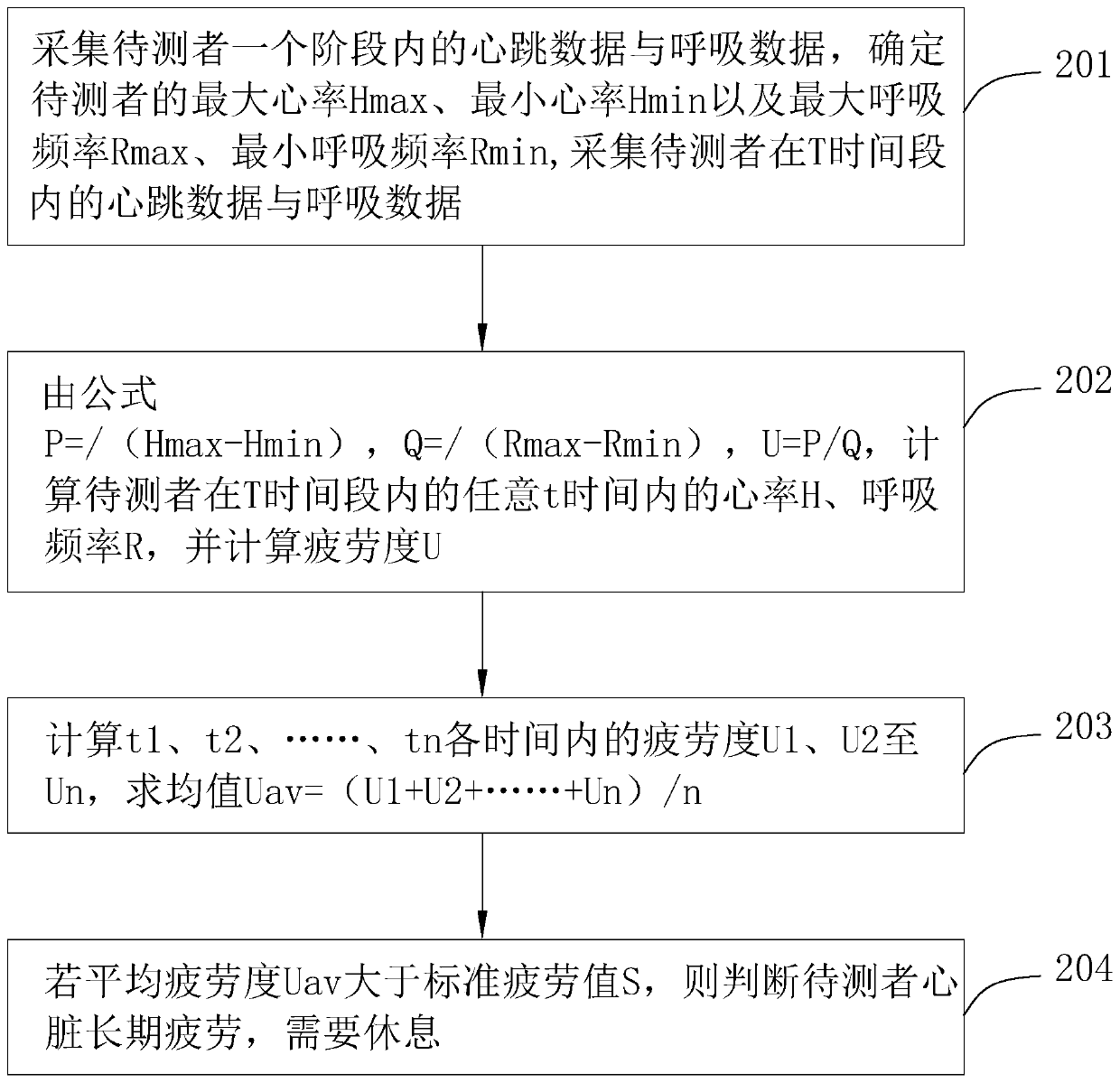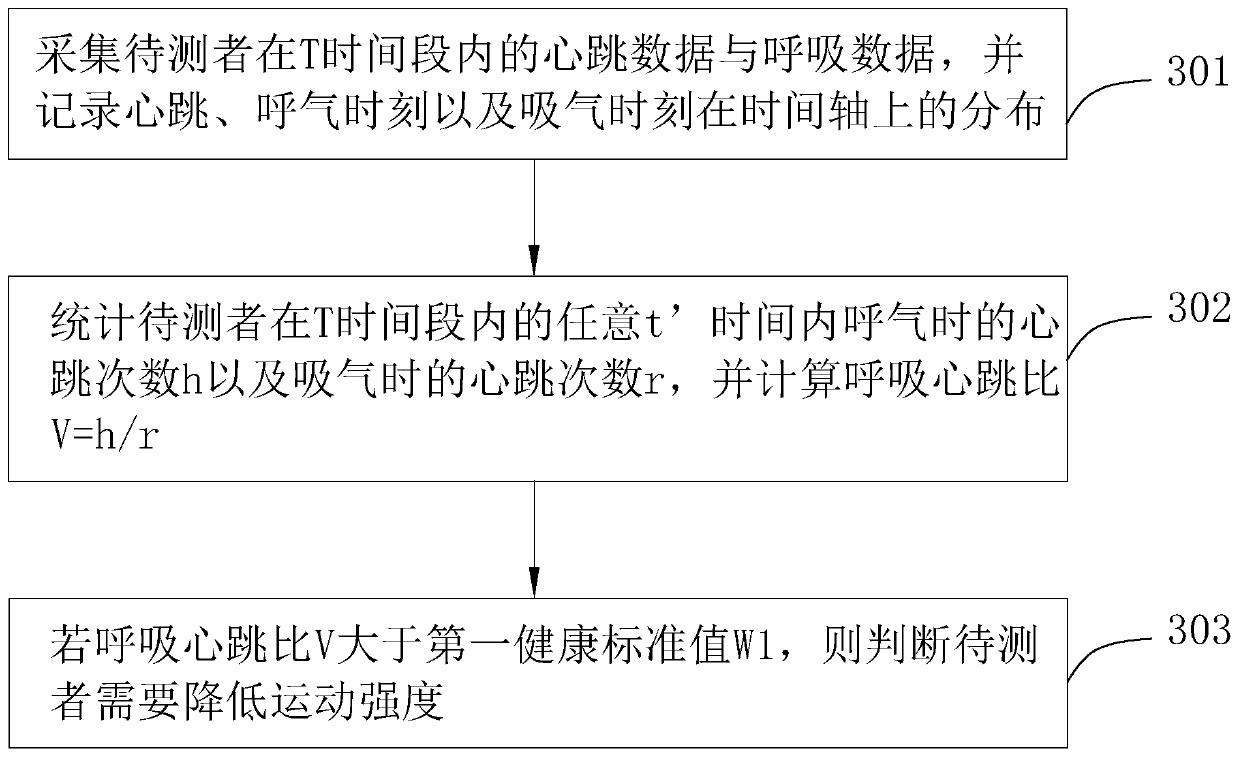Heart rate analysis method and smart wearable device
An analysis method and heart rate technology, applied in the field of heart rate analysis methods and smart wearable devices, can solve problems such as insufficient utilization of detection data, and achieve the effect of improving health status and health level
- Summary
- Abstract
- Description
- Claims
- Application Information
AI Technical Summary
Problems solved by technology
Method used
Image
Examples
Embodiment 1
[0042] A heart rate analysis method, see figure 1 ,include
[0043] 101: Collect the heartbeat data and breathing data of the subject in one stage, determine the maximum heart rate Hmax, the minimum heart rate Hmin, the maximum respiratory rate Rmax, and the minimum respiratory rate Rmin of the subject, and collect the regular heart rate Hs and the regular heart rate of the subject. Respiratory rate Rs;
[0044] Collect the heartbeat data and breathing data of the subject in the T time period, and record the distribution of heartbeat, exhalation time and inhalation time on the time axis;
[0045] 102: Calculate the heart rate H and respiration rate R of the subject in any t time period in the T time period, by the formula U=P / Q, where P is the heart rate deviation rate, Q is the breathing deviation rate, and U is the fatigue degree;
[0046] 103: If the fatigue degree U is greater than the maximum fatigue value M, it is judged that the heart of the subject is excessively f...
Embodiment 2
[0048] A heart rate analysis method, see figure 2 ,include
[0049] 201: Collect the heartbeat data and respiration data of the subject in one stage, determine the maximum heart rate Hmax, the minimum heart rate Hmin, the maximum respiratory rate Rmax, and the minimum respiratory rate Rmin of the subject, and collect the conventional heart rate Hs and the conventional heart rate of the subject. Respiratory rate Rs;
[0050] Collect the heartbeat data and breathing data of the subject in the T time period, and record the distribution of heartbeat, exhalation time and inhalation time on the time axis;
[0051] 202: Calculate the heart rate H and respiration rate R of the subject in any t time period in the T time period, by the formula U=P / Q, where P is the heart rate deviation rate, Q is the breathing deviation rate, and U is the fatigue degree;
[0052] 203: Calculate the fatigue degrees U1, U2, ..., Un in each time period of t1, t2, ..., tn, and calculate the average val...
Embodiment 3
[0055] A heart rate analysis method, see image 3 ,include
[0056]301: Collect the heartbeat data and breathing data of the subject within the T time period, and record the distribution of the heartbeat, exhalation time, and inhalation time on the time axis;
[0057] 302: According to the record of the time axis, count the number of heartbeats h when the subject exhales and the number of heartbeats r when inhaling during any time t' within the time period T, and calculate the breathing-heartbeat ratio V=h / r;
[0058] 303: If the respiration and heart rate ratio V is greater than the first health standard value W1, it is determined that the test subject needs to reduce the exercise intensity.
PUM
 Login to View More
Login to View More Abstract
Description
Claims
Application Information
 Login to View More
Login to View More - R&D
- Intellectual Property
- Life Sciences
- Materials
- Tech Scout
- Unparalleled Data Quality
- Higher Quality Content
- 60% Fewer Hallucinations
Browse by: Latest US Patents, China's latest patents, Technical Efficacy Thesaurus, Application Domain, Technology Topic, Popular Technical Reports.
© 2025 PatSnap. All rights reserved.Legal|Privacy policy|Modern Slavery Act Transparency Statement|Sitemap|About US| Contact US: help@patsnap.com



